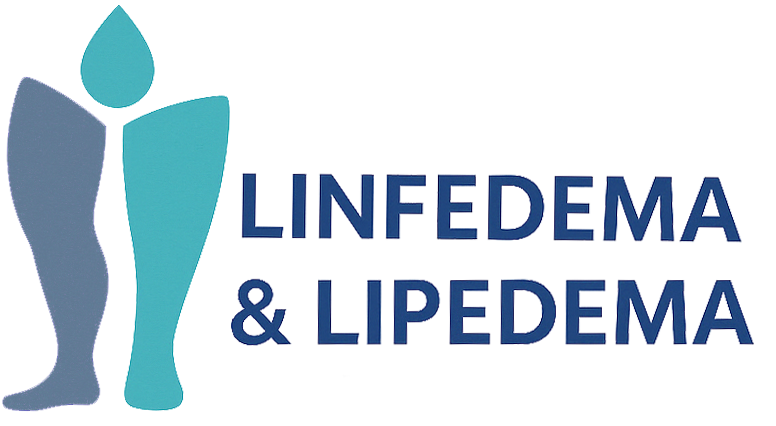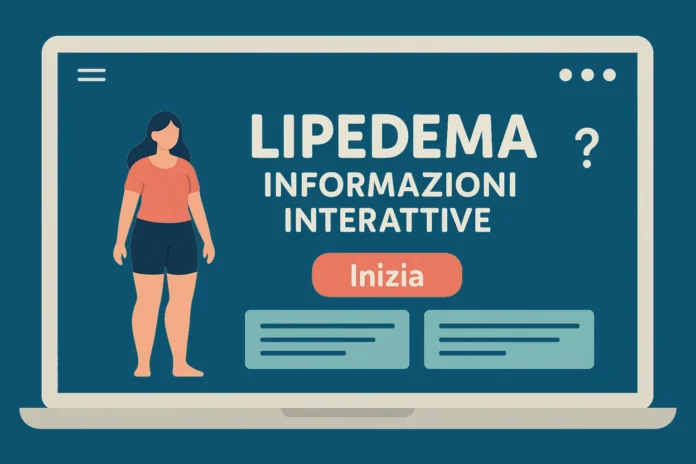Introduction
Lymphedema and lipedema are two distinct chronic conditions that affect the lymphatic system and adipose tissue, causing fluid and/or fat accumulation in the extremities, pain, and significant impairment of quality of life. While lymphedema is characterized by the accumulation of lymphatic fluid in the soft tissues due to an obstruction of the lymphatic system, lipedema is a condition characterized by the pathologic accumulation of fatty tissue, mainly in the legs and sometimes in the arms, affecting almost exclusively women.
In recent years, scientific research has made significant progress in understanding these conditions and developing new therapies. This article presents a comprehensive and up-to-date overview of the most recent therapeutic innovations for both conditions.
Part I: New Therapies for Lymphedema
1. Surgical innovations
1.1 Lymphovenous Bypass (LVB)
One of the most innovative and promising surgical procedures for the treatment of lymphedema is lymphovenous bypass (LVB). This minimally invasive approach, performed at specialized centers such as UC Davis Health, involves identifying blocked lymphatic channels and connecting them to adjacent veins to allow fluid to bypass the obstruction.
The main advantages of this procedure include:
- Significant improvement in quality of life with reduction in swelling and discomfort
- Decreased dependence on compression sleeves
- Minimally invasive approach performed under a high-power microscope
- Using ultra-high frequency ultrasound (UHFUS) for precise real-time mapping of lymphatic vessels UC Davis Health1
1.2 Lymphatic-Venous Anastomosis (LVA) and Vascularized Lymph Node Transplantation (VLNT)
The surgical techniques currently in use can be classified into two main categories:
- Physiological procedures:
- Lymphatic-venous anastomosis (LVA): connects functioning lymphatic vessels with nearby veins, creating new pathways for lymphatic fluid drainage
- Vascularized lymph node transplantation (VLNT): involves the transplantation of healthy lymph nodes from an unaffected area of the body to one with lymphedema Springer2
- Reductive procedures:
- Liposuction: removes adipose and fibrotic tissue that has accumulated in areas affected by lymphedema
- Excisional techniques: surgically remove excess skin and tissue Springer2
Recent advances in these surgical approaches include:
- The integration of advanced imaging techniques, such as lymphoscintigraphy, magnetic resonance lymphangiography (MRL), and indocyanine green (ICG) lymphography
- The adoption of combined approaches that integrate physical and reductive procedures
- Standardization of outcome measurements using validated quality-of-life scales
2. Gene Therapy
One innovative approach is the use of gene therapy to prevent the development of lymphedema. Researchers at Indiana University have developed a treatment that uses tissue nanotransfection (TNT) technology to deliver the Prox1 gene directly to the skin in the area of lymphatic injury.
Prox1 is a crucial transcription factor in lymphatic vessel formation (lymphangiogenesis). Preliminary results of preclinical studies show:
- Significant reduction in swelling
- Improved lymphatic clearance
- Potential to prevent the onset of lymphedema when applied at the time of lymphatic injury Indiana University Medicine3
3. Collagen Nanofiber Scaffold
A new frontier in lymphedema therapy is the use of nanotechnology, specifically the BioBridge, a collagen nanofiber structure developed by Stanford researchers in collaboration with biotech companies.
The BioBridge is designed to:
- Mimicking the structure of natural collagen
- Stimulate lymphangiogenesis (growth of new lymphatic vessels)
- Guiding endothelial cells to grow along a predetermined pathway, bypassing blockages and promoting fluid drainage
Tests in animal models have shown that BioBridge can significantly increase lymphatic vessel formation around blocked areas, with an average of 27 new lymphatic collectors per square millimeter in treated subjects, compared with only 1 in control subjects. These results suggest that BioBridge may offer a more durable solution than currently available options State of Lymphedema4
4. Legislative News and Access to Care.
4.1 The Lymphedema Treatment Act in the United States.
A significant development in the US was the passage of the Lymphedema Treatment Act (LTA), which went into effect on January 1, 2024. This federal law improves Medicare insurance coverage for lymphedema treatments, specifically:
- Provides coverage for physician-prescribed compression garments
- Covers 80% of the established cost of compression items, with a 20% copayment paid by the patient
- Includes coverage for both standard and customized compression items for each affected body part medium USA5
4.2 Updates in the LEAs in Italy.
In Italy, as of December 30, 2024, important changes will come into effect in the new decree implementing the Livelli Essenziali di Assistenza (LEAs) regarding the management of lymphedema:
- Diagnosis and Monitoring: inclusion of specialist visits and advanced techniques such as lymphoscintigraphy and ultrasonography
- Therapeutic Treatments: coverage of Complex Decongestive Therapy (CDT) and compression therapy with customized garments
- Support and Education: therapeutic education programs for patients and family members, as well as psychological support
These changes will ensure more uniform and timely access to essential treatments throughout the country, with prescriptions having to refer to the new State of Lymphedema nomenclator codes6
Part II: New Therapies for Lipedema
1. Surgical Approaches
Liposuction remains the only surgical approach that can effectively remove the abnormal fatty tissue associated with lipedema. Advances in this area include:
- Tumescent Liposuction: this technique uses a local anesthetic solution that is injected into the areas to be treated, causing tumescence (swelling) and vasoconstriction, thus facilitating fat removal
- WAL (Water-Assisted Liposuction) techniques: this newer methodology uses a jet of water to detach fat cells, causing less trauma to surrounding tissues
- Treatment of Varicose Veins: is considered preventively to reduce the risk of postoperative complications, as poor circulation can exacerbate lipedema SciELO7
2. New Drugs in Experimentation.
2.1 RZL-12: A Targeted Approach.
One experimental drug that is showing promising results is RZL-12, developed by Raziel Therapeutics. This drug, currently in clinical trials, targets areas of adipose accumulation.
Its mechanism of action consists of:
- Direct injection into areas where fat cells accumulate
- Induction of fat cell destruction
- Replacement of destroyed cells with fibrotic tissue
Preliminary results show:
- Average 50% reduction of lipomas in patients with Dercum’s disease
- Significant reduction of pain by about 70%
- Improved mobility and quality of life Lipedema Simplified8
2.2 Tirzepatide: A Metabolic Approach.
Tirzepatide is a novel drug that acts as a GIP (glucose-dependent insulinotropic polypeptide) and GLP-1 (glucagon-like peptide-1) receptor agonist. Originally developed for the treatment of type 2 diabetes, it has shown significant potential in the management of obesity and may have applications in the treatment of lipedema.
Tirzepatide could act in lipedema through several mechanisms:
- Reduction in overall adiposity, with demonstrated effectiveness in weight loss of up to 22% in patients with obesity
- Improved metabolic parameters, including blood glucose, lipid profile, and liver function
- Reduction of inflammation in adipose tissue
- More pronounced effect on visceral and subcutaneous fat reduction than other drugs San Donato Group9
3. New Discoveries on Pathophysiology
Recent studies on the adipose tissue of patients with lipedema have revealed important changes at the cellular and vascular levels:
- Endothelial cells migrate to the periphery of the vascular wall, transforming into pericytes
- These pericytes subsequently transform into preadipocytes and finally into adipocytes, reaching up to twice the volume of healthy adipocytes or those of obese patients
- Significant thickening of capillary walls is observed, with proliferation of endothelial cells and pericytes
- More fragile basement membrane areas and cell degeneration phenomena are found
- The presence of calcium crystals within adipocytes is common
- Adipose tissue shows a significant increase in macrophages, although the corona structures typical of inflammation in obese patients are less frequent ITALF10
These findings suggest new avenues for the development of innovative diagnostic tools based on vascular markers and potentially targeted therapies that act specifically on the vascular changes found.
4. Innovative Nutritional Approaches
Recent studies have explored the effectiveness of specific nutritional approaches in the treatment of lipedema:
- LCHF (Low-Carbohydrate, High-Fat) diet: research conducted in 2023 demonstrated benefits in laboratory parameters related to weight, liver function, glucose profile, triglycerides, and HDL-C
- These studies also reported significant reductions in pain levels, fat mass, and leg volume, with decreased ankle circumference in patients with lipedema Lipedema Foundation11
Part III: Research and Future Developments
1. Cellular and Molecular Research
Research at the cellular and molecular levels is providing important insights into the pathogenetic mechanisms of both conditions:
- Studies on adipose tissue-derived stem cells (ASCs) revealed differences in gene expression between patients with lipedema and healthy subjects
- Research has identified increased angiogenesis and altered signaling in lipedema cells, particularly in stage 2
- An increase in macrophages and overexpression of MIF-1 gene and CD74 receptor was observed, suggesting a significant role of inflammatory processes Lipedema Foundation11
2. Development of Biomarkers
One area of intense research is the development of biomarkers that can:
- Facilitate early diagnosis of both conditions
- Distinguish more clearly between lymphedema, lipedema, and obesity
- Monitor disease progression and response to treatments
- Guide the personalization of therapies according to the patient’s specific molecular profile
3. Future of Regenerative Medicine
Regenerative medicine technologies represent a promising frontier for both conditions:
- The development of biological scaffolds such as BioBridge could improve the outcomes of lymph node transplants, making them an essential tool in the management of lymphedema
- Application of cell and gene therapies could lead to more targeted and durable treatments
- The development of biodegradable biomaterials that release growth factors to stimulate lymphatic regeneration in a controlled manner State of Lymphedema4
Conclusions
The therapeutic landscape for lymphedema and lipedema is evolving rapidly, with innovations ranging from advanced surgical techniques to gene therapies, from nanotechnology to new metabolic drugs. These developments are supported by a deepening understanding of the pathophysiologic mechanisms of these conditions and a greater recognition of their impact on quality of life.
Recent legislative changes, such as the Lymphedema Treatment Act in the United States and LEA updates in Italy, also indicate a growing institutional recognition of the importance of ensuring access to treatment for these chronic conditions.
Although many of these innovative approaches are still in development or clinical trials, they offer hope for significant improvements in the management of these debilitating conditions. The integration of traditional therapies with these new approaches, along with earlier and more accurate diagnosis, promises to greatly improve the prognosis and quality of life for patients with lymphedema and lipedema.
It is critical that healthcare professionals keep abreast of these developments and that patients are informed about available and emerging treatment options to facilitate shared therapeutic decisions and optimize treatment outcomes.
Bibliography
- UC Davis Health. (2024). Novel surgery gives lymphedema patients new hope. UC Davis Health1
- Sanka, S.A., et al. (2024). Advances in surgical management of chronic lymphedema: current strategies and future directions. Springer2
- Kamamoto, F., et al. (2024). Lipedema: exploring pathophysiology and treatment strategies-state of the art. SciELO7
- Lipedema Foundation. (2024). 2023 Research Roundup. Lipedema Foundation11
- Lipedema Simplified. (2024). Promising New Drug Trial. Lipedema Simplified8
- State of Lymphedema. (2024). New frontiers of lymphedema nanotechnology. State of Lymphedema4
- State of Lymphedema. (2024). New LEA Implementation Decree: What Changes from December 30, 2024 for lymphedema. State of Lymphedema6
- Indiana University Medicine. (2024). Dr Al Hassanein’s Revolutionizing Lymphedema Treatment. Indiana University Medicine3
- ITALF. (2025). Lipedema: new findings on changes in adipose tissue. ITALF10
- San Donato Group. (2025). Tirzepatide: what is it and how does the new molecule for obesity work. San Donato Group9
- US medium. (2024). Lymphedema Treatment Act Passed by Congress. medium USA5.




